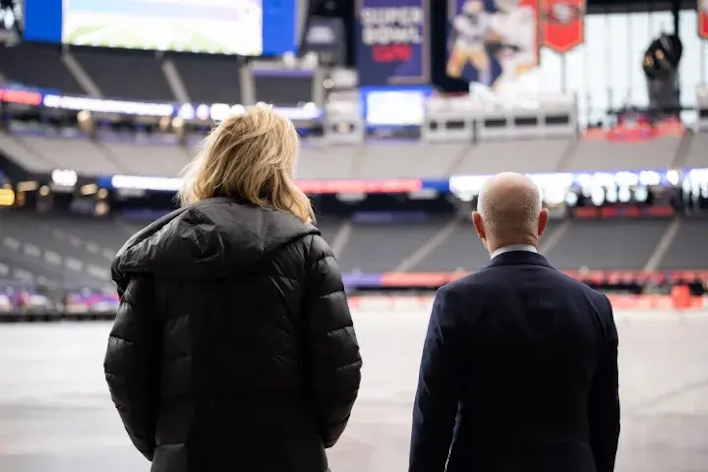Super Bowl LVIII Security: How Fans, 49ers, And Chiefs Will Be Protected

Cybersecurity And Infrastructure Agency - CISA's Role
Last year, Microsoft published a report on the rising digital threats against live high-profile sporting events such as the Super Bowl. The global sports market is valued at $600 billion, meaning there is a lot of value in the data that passes through this industry, including that which directly relates to teams as well as that which touches “critical business services, such as point-of-sale devices, I.T. infrastructures, and visitor devices.” To help address this swelling problem, the Cybersecurity and Infrastructure Security Agency (CISA) is deployed every year to the Super Bowl to help protect the digital footprint of one of the largest sporting events in the world. This effort likely began well prior and is an ongoing effort, but publicly started regarding SBLVIII back in September of 2023.
Last year, CISA noted that it was running a tabletop exercise to “explore, assess, and enhance cybersecurity response capabilities, plans, and procedures ahead of Super Bowl LVIII.” This four-hour exercise brought together 100 partners to “discussed a hypothetical scenario that included phishing, ransomware, a data breach, and a potential insider threat – all with cascading impacts on physical systems.” It is unclear what exactly that meant, and it isn’t published for operational security, but it can be simplified to exploring how an attacker might breach the security of the Super Bowl and what outcomes could come of that, such as system outages or more esoteric things like the enabling of all fire sprinklers or something absurd like that.
It is also noted in this article that “this is CISA’s 10th consecutive year partnering with the NFL and Super Bowl partners on what has become an annual tabletop exercise.” Further, the same amount of time has likely been spent securing this event as well, meaning CISA knows what it is doing down to the most minute of details.
The FBI Will Be On Hand As Well

While the FBI and friends will likely be onsite, a big chunk of operations will come out of the Las Vegas Fusion Center, which is where “a variety of law enforcement agencies, as well as federal, state, and local organizations, have a shared space to collaborate when managing major events.” Started in 2007 and moved in 2010, the Fusion Center in Vegas will house elements of local police and fire departments as well as representatives from the FBI, Department of Homeland Security, Transportation Security Agency, Federal Aviation Administration, and National Weather Service, among others.
Within the Las Vegas Fusion Center, it is described as looking like a scene from a movie with dimmed lights and screens on the wall displaying all available information, from traffic to security cameras and even the weather. It is mentioned that “for the foreseeable future, several screens will be dedicated to many angles of Allegiant Stadium, site of Super Bowl LVIII.” Effectively, the Fusion Center will act as the security hub for the Super Bowl, operating 24/7.
Turning back to the FBI’s role, it provides bomb technicians, weapons of mass destruction (WMD) experts, spare agents, and some other resources for security. It would seem that both the FBI and the Fusion Center in general have the same goal, which is “to prevent acts of terrorism, mass casualty incidents, and any significant criminal or transnational criminal activity,” per Fusion Center director Cary Underwood. There probably could not even be a bird that flies over Allegiant Stadium without the Fusion Center knowing about it.
Department Of Homeland Security To Watch For Threats


Subsequently, nearly 400 DHS employees have been deployed to Las Vegas to provide a wide range of support, including “air security resources; venue, cyber, and infrastructure security assessments; chemical, biological, radiological, nuclear, and explosives detection technologies; intelligence analysis and threat assessments; intellectual property enforcement; and real-time situational awareness reporting for our partners.” However, they will not be alone in these efforts and have partnered with the following agencies and organizations (excluding some already mentioned) to accomplish these goals:
- Office of Intelligence & Analysis
- Countering Weapons of Mass Destruction Office (CWMD)
- U.S. Coast Guard (USGG)
- U.S. Customs and Border Protection’s (CBP)
- Federal Emergency Management Agency (FEMA)
Hero Image: U.S. Department of Homeland Security
DHS Imagery: U.S. Department of Homeland Security/Sydney Phoenix


